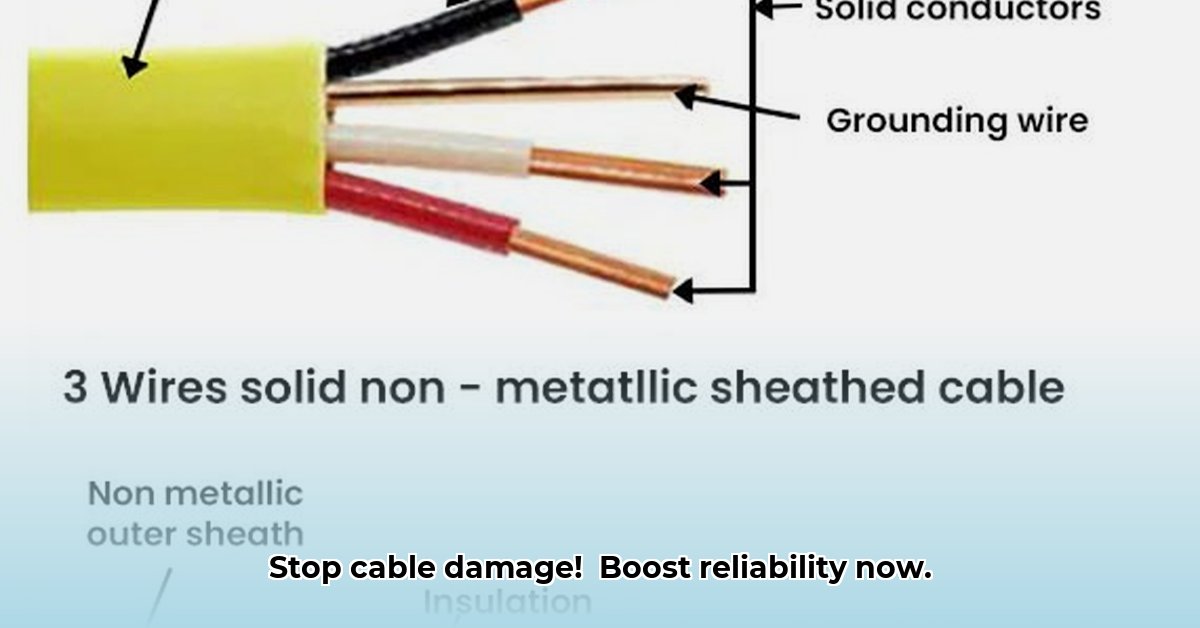
Right, lemme tell you something crucial, often overlooked: cable strain relief. It might sound fancy, but it's simply about keeping your cables safe from getting tugged, pulled, or otherwise damaged. Think of it as insurance for your electronics – a small price to pay to avoid big, expensive problems later! A loose cable isn't just unsightly; it's a recipe for disaster, leading to broken connections, faulty equipment, even safety hazards. Wouldn't you rather avoid that?
Understanding Cable Strain Relief: It's More Than Just a Pretty Name
So, what exactly is cable strain relief? Simply put, it's any method that keeps your cables secure where they plug into devices. It's like giving your wires a cuddle, so they don't get stressed and break. There are a few common approaches:
Clamping: Think of strong clips holding cables firmly in place. Ideal for heavy-duty cables needing serious protection. Power cords and industrial cables are good examples.
Strain Relief Bushings: These are often small rubber or plastic grommets inserted into a hole, then the cable is fed through. They create a snug fit, protecting cables from sharp edges. A good all-rounder, really.
Adhesive Methods: For smaller, more delicate cables, strong adhesive can work wonders. It's simple, relatively cheap, but use a high-quality adhesive designed for the job.
[Imagine a diagram here illustrating each method]
Selecting the Right Strain Relief: Matching the Method to the Cable
Choosing the right strain relief method isn't one-size-fits-all. Consider these factors:
The Cable Itself: A delicate fibre optic cable needs gentler treatment than a thick power cord. You wouldn't use a heavy clamp on a fibre optic cable, would you?
The Environment: Harsh conditions (extreme temperatures, vibrations, constant movement) demand robust solutions. A factory floor is different from a home office.
Space Constraints: Smaller devices need compact, efficient strain relief to minimise bulk. Miniaturization is a major factor here.
Here's a quick comparison – but remember, real-world performance depends on component quality and application:
| Method | Advantages | Disadvantages | Ideal For |
|---|---|---|---|
| Clamping | Strong, reliable, versatile, good for large cables | Can damage cables if installed improperly, less aesthetically pleasing | Heavy-duty applications, power cables, industrial settings |
| Strain Relief Bushings | Easy installation, various materials available | Might not be suitable for high-vibration environments | Most applications, offers a good balance of protection and ease of use |
| Adhesive Methods | Simple, cost-effective for small applications | Can degrade over time, less robust than other methods | Low-stress applications, small, delicate cables |
Installing Cable Strain Relief: A Step-by-Step Guide to Success
Getting it right is key – a bad job is worse than no strain relief at all! Here’s a general approach, but always follow manufacturer instructions:
Prep Work: Clean the cable and connection area. This ensures a strong bond (if using adhesive).
Choose Your Method: Select the appropriate method based on cable type, environment, and space constraints.
Installation: Follow instructions meticulously. This might involve clamping, inserting a bushing, or applying adhesive.
The Tug Test: Gently tug the cable to ensure it's secure. If it moves, redo it.
Troubleshooting Common Problems: Fixing What Goes Wrong
Even with careful installation, problems can arise. Here are some common issues and solutions:
Cable Pulling Out: The clamp isn't tight enough, or the adhesive has failed. Re-clamp or reapply adhesive, ensuring proper bonding.
Cable Damage: The strain relief method might be unsuitable, or the installation was faulty. Review and choose a better method or technique.
Future Trends in Cable Strain Relief: A Glimpse into Tomorrow
Cable management is constantly evolving. Miniaturization is a big trend, along with “smart” cable management systems. These systems use sensors to monitor cable strain and alert you to potential problems before they happen. It's like a built-in warning system for your cables!
Remember, proper cable strain relief isn't just about aesthetics; it's about the longevity and reliability of your equipment. Don't underestimate its importance. A small extra effort now can save you from major headaches and costs later.